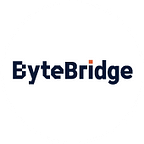High-Quality Training Data for Autonomous Cars in 2021
Data Annotation, an “Engine” for Self-Driving Car
With the development of computer vision technology and the increasing intelligence of the travel eco-system, the typical application scenario is autonomous driving.
Self-driving Cars Are Really Coming
In 2018, the world’s first driverless taxi was on the roads. This is the first driverless taxi ride in Frisco, Texas, by Silicon Valley start-up Drive.ai.
In China, Baidu is the leader in the auto autonomous driving industry. On 30 Nov 2019, Baidu launched a trial operation of RoboTaxi in Guangzhou, the second biggest city in China.
Technical Support Behind Self-driving Cars
In the process of autonomous driving, the car itself needs to have a number of “skills” such as perception, planning, decision-making, and control, which can be collectively referred to as “artificial intelligence”.
However, the algorithm of the car itself can’t handle more and more complex scenes without massive real road data.
Data Annotation, an “Engine” for Self-Driving Cars
The data annotation is supposed to make machines understand the world. In auto autonomous driving, the annotation scenarios usually include changing lanes to overtake cars, passing intersections, unprotected left turns and right turns without traffic light control, and some complex long-tail scenarios such as vehicles running red lights, pedestrians crossing the road, vehicles parked illegally on the roadside, and so on.
Common Data Labeling Types Include:
- 2D Bounding Boxes
- Lane Marking
- Video tracking annotation
- Point Annotation
- Semantic Segmentation
- 3D Object Recognition
- 3D Segmentation
- Sensor Fusion: Sensor Fusion Cuboids/Sensor Fusion Segmentation/Sensor Fusion Cuboids Tracking
High-quality Data is the Future of the Self-driving Industry
As self-driving cars move from the laboratory to reality, the safety of self-driving cars has drawn more and more attention in public.
The mainstream algorithm model of autonomous driving is mainly based on supervised deep learning. It is an algorithm model that derives the functional relationship between known variables and dependent variables. A large amount of structured labeled data is required to train and tune the model.
On this basis, if you want to make self-driving cars more “intelligent”, and form a closed loop of the business model for self-driving applications that can be replicated in different vertical landing scenarios, the model needs to be supported by massive and high-quality real road data.
In fact, the high-quality requirements for training data in the auto autonomous driving field also outline the future development of the data labeling industry. Different from the tags of “advanced” and “high-tech” in the artificial intelligence industry, data labeling is still a labor-intensive industry.
In the future, refinement, scenario-based, and customization will be three important directions of the data labeling industry. The high-quality labeling data will support the future of the artificial intelligence industry.
End
Outsource your data labeling tasks to ByteBridge, you can get the high-quality ML training datasets cheaper and faster!
- Free Trial Without Credit Card: you can get your sample result in a fast turnaround, check the output, and give feedback directly to our project manager.
- 100% Human Validated
- Transparent & Standard Pricing: clear pricing is available(labor cost included)
Why not have a try?
Relevant Articles:
2 How Auto-Driving Achieved through Machine Learning?
3 Labeling Service Case Study — Video Annotation — License Plate Recognition
4 What is Semantic Segmentation, Instance Segmentation, Panoramic segmentation?
5 How Data Labeling and Annotation Services Empower Logistics in 2021?
